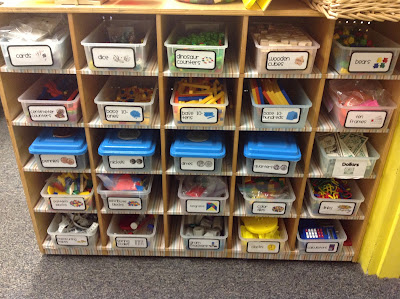I have heard several elementary teachers say, "Wait a second - I don't get to teach patterns anymore?" Their smile quickly turns sad and a long gaze appears dreaming of colorful patterns filled with cute shapes and designs. Yes, gone are the days of carefully planned color-coded calendars in AB, AAB and ABB patterns.
Eureka, patterns still exist! Mathematical practice #8 states: Students should look for and express regularity in repeated reasoning. Because it is stated in the mathematical practices, every K-12 student should be solving problems by looking for patterns.
However, we have to change our schema of patterns. In the past, we gave students a pattern, and they had to identify the next item or create a rule for the pattern. Going deeper meant students created a new pattern with an existing rule.
Now, we need to have a different approach to teaching patterns. Patterns are used to solve problems. I use the pattern of odd and even a lot in my classroom math discussions. Early in the year, there are many discussions of "What does odd mean? What does even mean?" This concept then leads to the next question, "What happens when you add two odd numbers? What happens when you add two even numbers? If you want an odd total, what are your addends going to be?" (Yes, I make my students use the word addend).
Odd and even patterns also come up when counting coins and telling time. Students quickly realize that the pattern still exists when you are counting by 5. I wait patiently for this moment to occur in my classroom. "Mrs. McEldowney, when I count nickels, the ones digit goes 5, 0, 5, 0. That is odd, even, odd, even! How cool is that?" My follow-up question then becomes, "Well, if the pattern works with counting by 5, does it also work when you count by 4? count by 7?"
The following is one of my favorite pattern problems. I recommend spending about 5 minutes each day for several days until all of the questions have been sufficiently dissected.
I recommend only trying to tackle one question per day. It is amazing to watch students manipulate numbers to figure out the pattern. I leave it on the board for the whole day so students are constantly reminded to think about the question.
Once you get started with this one, it is hard to stop. What patterns did your class notice when solving the problem?

